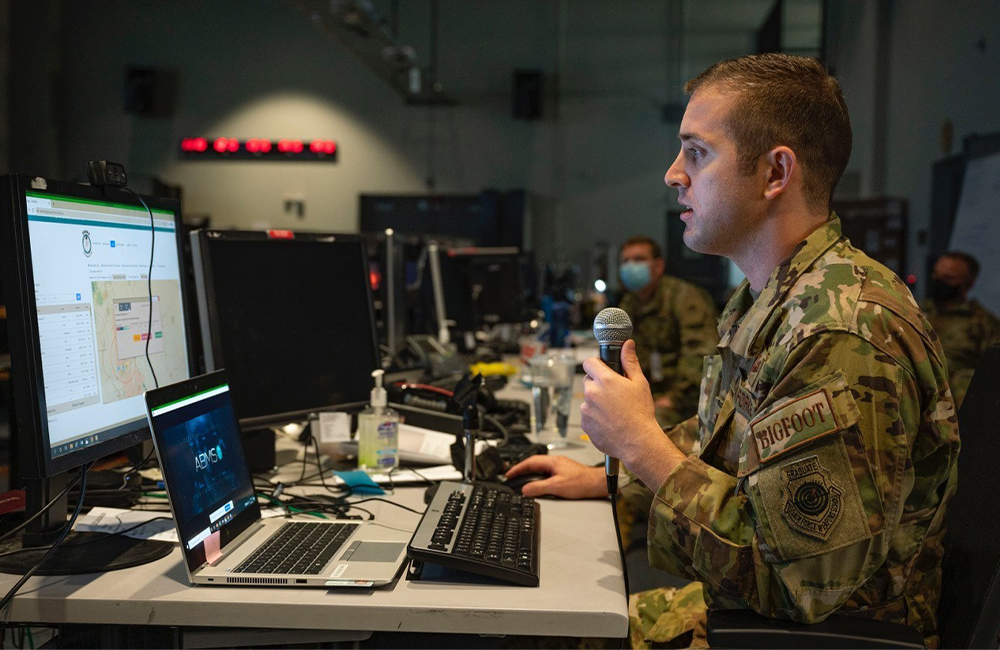DOD is Making its Workforce Digitally Savvy

Facilitating open communication to allow digital innovation is a new strategy for Defense Department IT leaders aiming to unlock sustainable new ideas in a digital IT environment.
One key to this comes down to the people. One of the biggest roadblocks to digital innovation at the agency is communication.
“So, we opened up those channels of communication,” said Lt. Col. Kristin Saling, deputy director of people analytics within the Army’s Office of the Assistant Secretary during a GovLoop event. “Having an up, down and lateral communication throughout the organization has been critical. It has also led to advancement, especially during quarantine.”
More specifically, people, platforms, processes and culture are the four elements necessary for sustainable innovation, Saling said.
Senior IT leaders often engage in innovative discussions and conversations on Twitter and LinkedIn, but seeing these leaders as pieces of a whole can give the Army a head start on recognizing thought leadership trends.
“This is how all of these things fit together, we’re not just going to purchase a tool and not build the ecosystem around it, we can’t just throw something innovative to a bunch of people and expect them to figure out how to use it,” Saling said. “To get maximum value out of it, we should bring in some training and business processes — bring in the whole nine yards.”
In the past, digital innovation has been a challenge because the future of warfare increasingly relies on data and software tools. Therefore the Army is taking strides to upskill warfighters to be digitally savvier.
“It’s been incredibly inspiring to see leaders like the 18th Airborne Corps Commander, 82nd Airborne Division Commander, 101st Division, they are all establishing innovation cells and are all becoming data-driven and AI-driven organizations,” Saling said. “I see these forward-thinking leaders looking at how they can integrate new technologies and new expertise into their formations. Change their business processes around them and change the way they work together.”
AI and machine learning are together also playing a vital role in DevSecOps for other agencies across DOD and the Department of Homeland Security.
U.S. Citizenship and Immigration Services (USCIS) is focused on establishing governance and data standards for robotic process automation.
Paula Wagner, Chief of the Systems Delivery Division in the Office of Information Technology at U.S. Citizenship and Immigration Services (USCIS), said the agency is focused on establishing governance and data standards for robotic process automation (RPA) efforts.
“We started testing out what bots look like in our organization, we’re working on our strategy with unattended bots and how to manage them,” said USCIS Chief of Systems Delivery Division Paula Wagner at an ATARC event. “We’re also working to set up our citizen development so that people across the organization can build their own bots with whatever process they were looking to automate.”
The U.S. Transportation Command is looking at how machine learning can catch abnormal behavior on networks, noted Christopher Crist, chief of cyber operations and development command, control, communications and cyber systems.
For both Crist and Wagner, a culture of open communication is critical to sustaining innovative steps in AI and machine learning.
“Anyone hoping to implement a DevSecOps culture in an organization, having that education piece is very important,” Crist said. “Having someone continually there to educate and be involved. Get people to understand why it’s important and help them connect what they’re currently to where they can go.”
This is a carousel with manually rotating slides. Use Next and Previous buttons to navigate or jump to a slide with the slide dots
-

AI Foundations Driving Government Efficiency
Federal agencies are modernizing systems, managing risk and building trust to scale responsible AI and drive government efficiency.
43m watch -

Inside DOD’s Push to Grow the Cyber Workforce Through Academia
Diba Hadi gives her first interview since becoming principal director of the DOD’s Cyber Academic Engagement Office.
15m listen -

Agencies Tackle Infrastructure Challenges to Drive AI Adoption
Federal agencies are rethinking data strategies and IT modernization to drive mission impact and operational efficiency as new presidential directives guide next steps.
5m read Partner Content -

Generative AI Demands Federal Workforce Readiness, Officials Say
NASA and DOI outline new generative AI use cases and stress that successful AI adoption depends on strong change management.
6m read -

The Next AI Wave Requires Stronger Cyber Defenses, Data Management
IT officials warn of new vulnerabilities posed by AI as agencies continue to leverage the tech to boost operational efficiency.
5m read -

Federal CIOs Push for ROI-Focused Modernization to Advance Mission Goals
CIOs focus on return on investment, data governance and application modernization to drive mission outcomes as agencies adopt new tech tools.
4m read -

Fed Efficiency Drive Includes Code-Sharing Law, Metahumans
By reusing existing code instead of rewriting it, agencies could dramatically cut costs under the soon-to-be-enacted SHARE IT Act.
5m read -

Agencies Push Data-Driven Acquisition Reforms to Boost Efficiency
New initiatives aim to increase visibility of agency spending, improve data quality and create avenues to deploy solutions across government.
5m read -

Data Transparency Essential to Government Reform, Rep. Sessions Says
Co-Chair of the Congressional DOGE Caucus Rep. Pete Sessions calls for data sharing and partnerships to reduce waste and improve efficiency.
5m read -

DOD Turns to Skills-Based Hiring to Build Next-Gen Cyber Workforce
Mark Gorak discusses DOD’s efforts to build a diverse cyber workforce, including skills-based hiring and partnerships with over 480 schools.
20m listen -

Trump Executive Order Boosts HBCUs Role in Building Federal Tech Workforce
The executive order empowers HBCUs to develop tech talent pipelines and expand access to federal workforce opportunities.
3m read -

Navy Memo Maps Tech Priorities for the Future Fight
Acting CTO’s memo outlines critical investment areas, from AI and quantum to cyber and space, as part of an accelerated modernization push.
5m read




